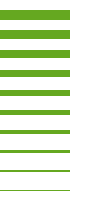https://doi.io-warnemuende.de/10.12754/msr-2006-0067
doi:10.12754/msr-2006-0067
© Author(s) 2006. This work is distributed
under

Dieses Werk ist lizenziert unter einer Creative Commons Namensnennung - Nicht kommerziell - Keine Bearbeitungen 4.0 International Lizenz.
Reconstruction of the Littorina Transgression in the Western Baltic Sea
Abstract. Due to the early Holocene global sea-level rise marine water masses were entering the Baltic Basin and led to one of the most dramatic environmental changes in the post-glacial history of the Baltic Sea - the Littorina transgression. While the general evolution is well-known, many details remain controversial. This concerns for example the dating with the event being apparently younger than presumed, and the detailed description of the transgression. New cores were drilled west and east of the Darss Sill, the Mecklenburg Bay and the Arkona Basin, to investigate the transition from the fresh water conditions of the Ancylus Lake to the marine-brackish conditions of the Littorina Sea in a high spatial and temporal resolution. Sedimentphysical, sedimentological, geochemical and palaeontological analyses were conducted in order to define proxy parameters that are indicative of this transgression event. In general, Arkona Basin sediments display more abrupt shifts in the proxy parameter at the transition from Ancylus Lake to Littorina Sea stage material than those from the Mecklenburg Bay. Radiocarbon dating on calcareous material indicates that marine waters entered the Mecklenburg Bay first at c. 7,500 14C yr BP and the Arkona Basin approximately 1,000 years later at c. 6,500 14C yr BP. These results therefore suggest a transgression pathway via the Great Belt into the Mecklenburg Bay and then into the Arkona Basin.
Abstract. Infolge des globalen Meeresspiegelanstieges im Frühholozän drangen marine Wässer in das Ostseebecken ein und lösten eine der dramatischten Umweltveränderungen in der post-glazialen Entwicklungsgeschichte der Ostsee aus - die Littorina Transgression. Die generelle Entwicklung ist bekannt, jedoch bleiben viele Details widersprüchlich. Dies bezieht sich nicht nur auf den Beginn der Transgression, welcher jünger scheint als bisher angenommen, sondern auch auf die Details der Entwicklung der Transgression an sich. Neue Kerne wurden westlich und östlich der Darßer Schwelle in der Mecklenburger Bucht und im Arkona Becken gewonnen, um den Übergang von den Süßwasser-Bildungen des Ancylus Sees zu den marinen-brackischen Bildungen des Littorina Meeres räumlich und zeitlich hochauflösend zu untersuchen. Sedimentphysikalische, sedimentologische, geochemische und paläontologische Analysen sind durchgeführt worden, um die für dieses Transgressionsereignis indikativen Proxy-Parameter zu definieren. Im Allgemeinen zeigen die Sedimente des Arkona Beckens gegenüber der Mecklenburger Bucht abruptere Veränderungen in den Proxy-Parametern am Übergang vom Ancylus See zum Littorina Meer. Radiokarbonalter (kalkhaltiges Material) deuten darauf hin, dass marine Wässer zuerst in die Mecklenburger Bucht um ca. 7500 14C a BP gelangten und das Arkona Becken ungefähr 1000 Jahre später um ca. 6500 14C a BP erreichten. Diese Ergebnisse favorisieren einen Transgressionsweg über den Großen Belt in die Mecklenburger Bucht und danach in das Arkona Becken.
